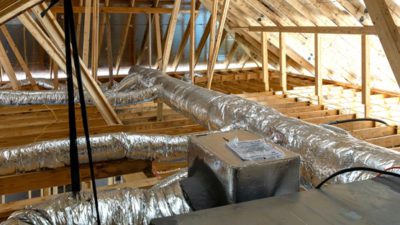The pandemic wasn’t the first time the U.S. experienced a notable shift in energy use. In 2008, for example, there was a 10%-15% decrease in industrial and commercial energy consumption due to the economic crisis, but there wasn’t a change in residential energy use.
In contrast, when the pandemic struck at the beginning of 2020, approximately 4.7 million Americans switched to remote work and a shift in residential energy use was noted.
According to the National Bureau of Economic Research (NBER), “pre-pandemic, electricity use rose sharply early in the morning as people prepared for work, dropped off during the day, and peaked in the evening. During the pandemic, this pattern has largely disappeared: residential consumption rises later in the morning, and is 16 percent higher during work hours than it was before the pandemic struck.”
From April to July of 2020, Americans spent $6 billion more on home energy use than pre-pandemic times. When we think of people spending more time at home during the day, it goes beyond individuals working from home; 49.6 million people were unemployed and were also using more energy at home during the day.
As we embark on the year 2022, the pandemic might feel different than it did 2 years ago but working from home hasn’t disappeared. 5 months ago, it was reported by Gallup that 45% of full-time workers in the U.S. worked from home every day or at least part of the week.
Unique situations also arise now when more people are at home together as we saw with lockdowns and now sudden quarantining. Energy use spikes even more when the whole family is using the Wi-Fi, coffee maker, kitchen, computers, televisions, and more.
Tips to Save Energy While Working from Home
- Reduce your phantom load: You probably have a lot more things powered up at home during the day than you did pre-pandemic, such as your computer, monitor, kitchen appliances, television, and more. Make sure you use an advanced power strip to cut off energy use when you’re finished for the day so that you’re not wasting any energy while you’re away from your desk. Get advanced power strips at no-cost through the Mass Save program (see end of blog)!
- Be smart about lighting: Use natural light as much as possible throughout your day. During the winter, opening your blinds or curtains can also help heat your home with the sunlight that pours through the windows. When lights are necessary for a Zoom call or a cloudier day, ensure that you’ve switched all your bulbs to energy-efficient LED bulbs so that you’re lighting in the most efficient way possible.
- Invest in the right equipment: Did you know that ENERGY STAR-certified computers use 25%-40% less energy than conventional models? Check out the wide variety of appliances and equipment that could help you lower your daily energy costs. Also, don’t forget to check your current computer’s settings for energy-saving modes. Click here to learn more about the ENERGY STAR program.
- Upgrade your thermostat: Using a programmable thermostat or smart thermostat can help to reduce the energy it takes to heat and cool your home year-round. According to Time, the biggest increase in residential energy use during the pandemic was the summer of 2020 when everyone was cranking up the AC at home, totaling $6 billion extra in residential energy usage.
It is estimated that individuals working from home have seen a $40-$50 spike in monthly home energy costs as they navigate working from home, but the hope is that there have also been ways that remote work has positively impacted the environment (and your wallet!).
For example, maybe you’re doing less washing and drying of clothes without those daily trips to the office or maybe you’re saving on fuel as you don’t commute to and from work as regularly. Are you cooking more at home and creating less waste with less to-go restaurant packaging from your in-office days?
However your workday looks, energy reduction doesn’t have to start and stop with improving your work-from-home habits.
To learn more about how your home consumes and loses energy at all times of the day/night, call us at HomeWorks Energy at (781) 305-3319 to schedule a no-cost Home Energy Assessment through the Mass Save® program. You can also easily schedule online here.
When you complete an assessment, you get a custom home energy report to keep, and you also get access to the generous energy efficiency rebates and incentives that are offered to participants of the program, like up to $10K in heat pump rebates, no-cost sealing of air leaks in your home, and items like programmable thermostats and advanced power strips offered at no cost to you.
Pandemic or not, energy usage affects the environment and your wallet, which is why we’ve made it our everyday mission to help our Massachusetts neighbors understand their home’s energy consumption and find easy and cheap ways to make their homes greener.
Resources:
National Bureau of Economic Research (NBER)
Northwest Energy Efficiency Alliance (NEEA)
TimeA





